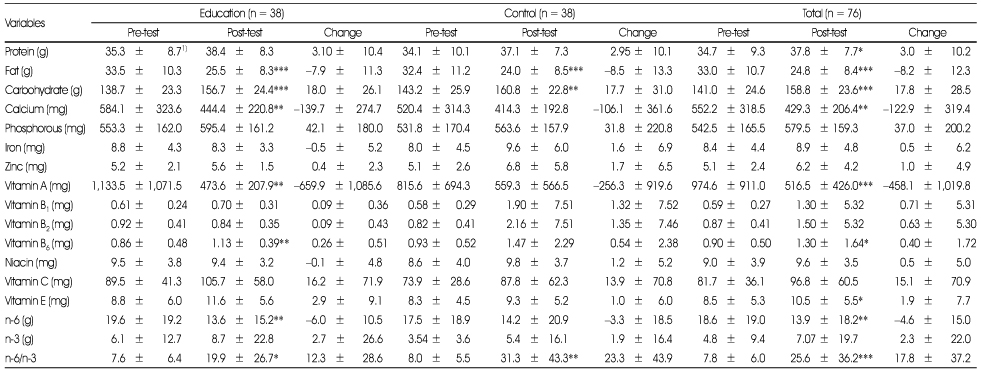References
1. Alm B, Aberg N, Erdes L, Möllborg P, Pettersson R, Norvenius SG, Goksör E, Wennergren G. Early introduction of fish decreases the risk of eczema in infants. Arch Dis Child 2009;94(1):11–15.
2. Arslanoglu S, Moro GE, Schmitt J, Tandoi L, Rizzardi S, Boehm G. Early dietary intervention with a mixture of prebiotic oligosaccharides reduces the incidence of allergic manifestations and infections during the first two years of life. J Nutr 2008;138(6):1091–1095.
3. Boguniewicz M, Leung DY. Atopic dermatitis: a disease ofaltered skin barrier and immune dysregulation. Immunol Rev 2011;242:233–246.
4. Chatzi L, Apostolaki G, Bibakis I, Skypala I, Bibaki-Liakou V, Tzanakis N, Kogevinas M, Cullinan P. Protective effect of fruits, vegetables and the Mediterranean diet on asthma and allergies among children in Crete. Thorax 2007;62(8):677–683.
5. Devereux G, Seaton A. Diet as a risk factor for atopy and asthma. J Allergy Clin Immunol 2005;115(6):1109–1117.
6. Devereux G, Turner SW, Craig LC, McNeill G, Martindale S, Harbour PJ, Helms PJ, Seaton A. Low maternal vitamin E intake during pregnancy is associated with asthma in 5-year-old children. Am J Respir Crit Care Med 2006;174(5):499–507.
7. Eriksen BB, Kåre DL. Open trial of supplements of omega 3 and 6 fatty acids, vitamins and minerals in atopic dermatitis. J Dermatolog Treat 2006;17(2):82–85.
8. Fitzsimon N, Fallon U, O'Mahony D, Loftus BG, Bury G, Murphy AW, Kelleher CC. Mother's dietary patterns during pregnancy and risk of asthma symptoms in children at 3 years. Ir Med J 2007;100(8):suppl 27–suppl 32.
9. Fogarty A, Lewis S, Weiss S, Britton J. Dietary vitamin E, IgE concentrations, and atopy. Lancet 2000;356(9241):1573–1574.
10. Kremmyda LS, Vlachava M, Noakes PS, Diaper ND, Miles EA, Calder PC. Atopy risk in infants and children in relation to early exposure to fish, oily fish, or long-chain omega-3 fattyacids: a systematic review. Clin Rev Allergy Immunol 2011;41(1):36–66.
11. Kull I, Bergström A, Lilja G, Pershagen G, Wickman M. Fish consumption during the first year of life and development of allergic diseases during childhood. Allergy 2006;61(8):1009–1015.
12. Kunz B. Clinical validation and guidelines for the SCORAD Index: consensus report of the European task force on atopic dermatitis. Dermatology 1997;195:10–19.
13. Hijazi N, Abalkhail B, Seaton A. Diet and childhood asthma in a society in transition: a study in urban and rural Saudi Arabia. Thorax 2000;55(9):775–779.
14. Javanbakht MH, Keshavarz SA, Djalali M, Siassi F, Eshraghian MR, Firooz A, Seirafi H, Ehsani AH, Chamari M, Mirshafiey A. Randomized controlled trial using vitamins E and D supplementation in atopic dermatitis. J Dermatolog Treat 2011;22(3):144–150.
15. Korean Nutrition Society. Dietary reference intakes for Koreans
16. Lee JH, Kim EH, Cho JB, Kim HY, Suh JM, Ahn KM, Cheong HK, Lee SI. Comparison of prevalence and risk factors of atopic dermatitis by physical examination and questionnaire survey in elementary school children. Pediatr Allergy Respir Dis 2011;21(3):186–196.
17. Lee JS, Jo S, Lee H, Kang A, Chung SJ. Associated factors of severity of atopic dermatitis in children. Korean J Community Nutr 2010;15(6):776–782.
18. Lee S, Ahn K, Paik HY, Chung SJ. Serum immunoglobulin E (IgE) levels and dietary intake of Korean infants and young children with atopic dermatitis. Nutr Res Pract 2012;6(5):429–435.
19. Li-Weber M, Giaisi M, Treiber MK, Krammer PH. Vitamin E inhibits IL-4 gene expression in peripheral blood T cells. Eur J Immunol 2002;32(9):2401–2408.
20. Malmberg KJ, Lenkei R, Petersson M, Ohlum T, Ichihara F, Glimelius B, Frödin JE, Masucci G, Kiessling R. A short-term dietary supplementation of high doses of vitamin E increases T helper 1 cytokine production in patients with advanced colorectal cancer. Clin Cancer Res 2002;8(6):1772–1778.
21. Martindale S, McNeill G, Devereux G, Campbell D, Russell G, Seaton A. Antioxidant intake in pregnancy in relation to wheeze and eczema in the first two years of life. Am J Respir Crit Care Med 2005;171(2):121–128.
22. Mayser P, Mayer K, Mahloudjian M, Benzing S, Krämer HJ, Schill WB, Seeger W, Grimminger F. A double-blind, randomized, placebo-controlled trial of n-3 versus n-6 fatty acid-based lipid infusion in atopic dermatitis. JPEN J Parenter Enteral Nutr 2002;26(3):151–158.
23. Njå F, Nystad W, Lødrup Carlsen KC, Hetlevik O, Carlsen KH. Effects of early intake of fruit or vegetables in relation to later asthma and allergic sensitization in school-age children. Acta Paediatr 2005;94(2):147–154.
24. Oh JW, Kim KE, Pyun BY, Lee HR, Choung JT, Hong SJ, Park KS, Lee SY, Song SW, Kim CH, Ahn KM, Nam SY, Shon MH, Kim WK, Lee MH, Kwon BC, Choi SY, Lee SY, Lee HB, Lee SI, Lee JS. Nationwide study for epidemiological change of atopic dermatitis in school aged children between 1995 and 2000 and kindergarten aged children in 2003 in Korea. Pediatr Allergy Respir Dis 2003;13(4):227–237.
25. Oh SY, Chung J, Kim MK, Kwon SO, Cho BH. Antioxidant nutrient intakes and corresponding biomarkers associated with the risk of atopic dermatitis in young children. Eur J Clin Nutr 2010;64(3):245–252.
26. Seaton A, Godden DJ, Brown K. Increase in asthma: a more toxic environment or a more susceptible population? Thorax 1994;49(2):171–174.
27. Senkal M, Geier B, Hannemann M, Deska T, Linseisen J, Wolfram G, Adolph M. Supplementation of omega-3 fatty acids in parenteral nutrition beneficially alters phospholipid fatty acid pattern. JPEN J Parenter Enteral Nutr 2007;31(1):12–17.
28. Tamay Z, Akcay A, Ones U, Guler N, Kilic G, Zencir M. Prevalence and risk factors for allergic rhinitis in primary school children. Int J Pediatr Otorhinolaryngol 2007;71(3):463–471.
29. The Korean Nutrition Society. Dietary reference intakes for Koreans, first revision Seoul: The Korean Nutrition Society; 2010.
30. Tsoureli-Nikita E, Hercogova J, Lotti T, Menchini G. Evaluation of dietary intake of vitamin E in the treatment of atopic dermatitis: a study of the clinical course and evaluation ofthe immunoglobulin E serum levels. Int J Dermatol 2002;41(3):146–150.
31. Wong GW, Ko FW, Hui DS, Fok TF, Carr D, von Mutius E, Zhong NS, Chen YZ, Lai CK. Factors associated with difference in prevalence of asthma in children from three cities in China: multicentre epidemiological survey. BMJ 2004;329(7464):486.




